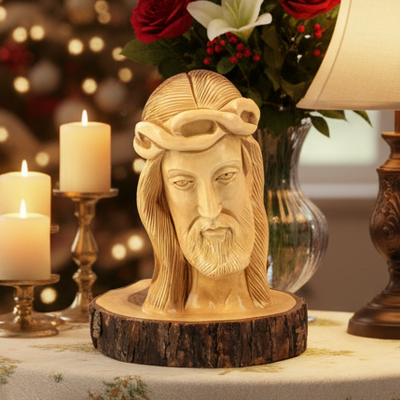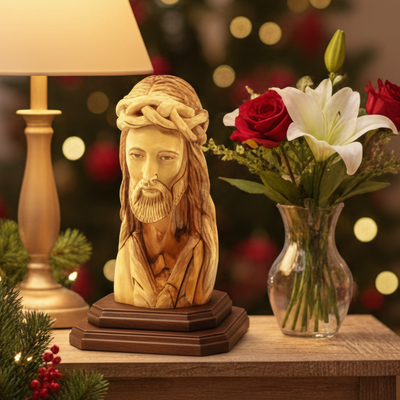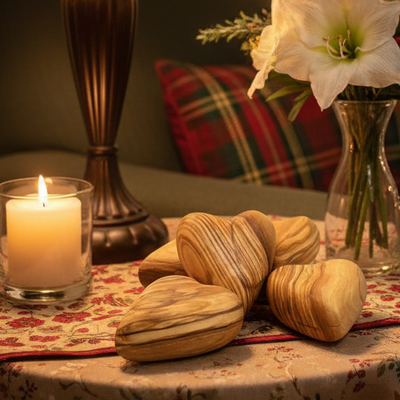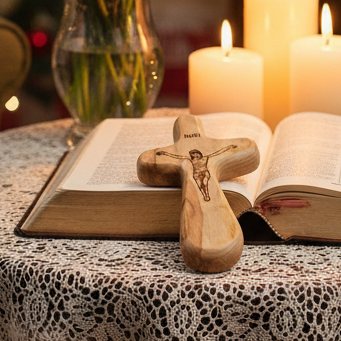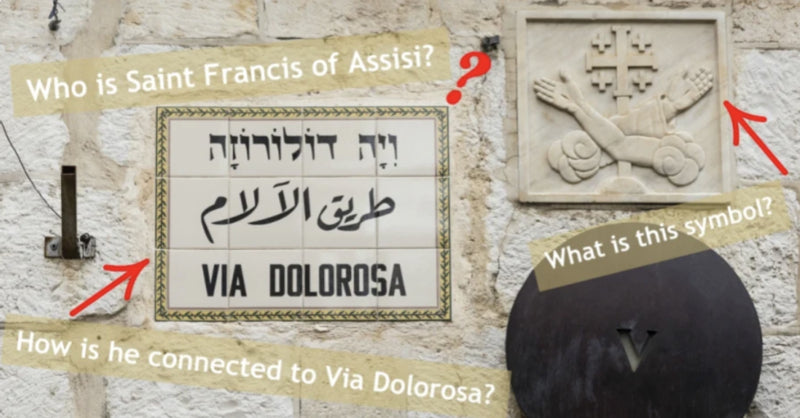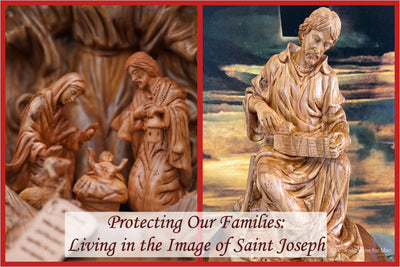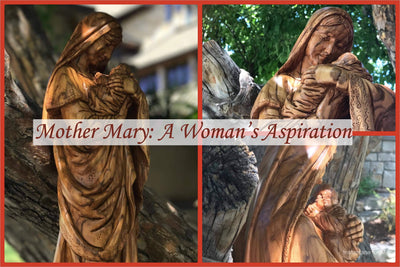Who is Saint Francis of Assisi?
The story of Saint Francis of Assisi is well known to Catholic faithful throughout the world. As one of the most beloved saints, his story of commitment of service to Christ through poverty, humility and charitable deeds is taught in almost every Catholic parochial and Sunday school.
Who are the Franciscans?
Many do not know, however, that Francis and his Order of monks known as Franciscans have played one of the most important roles in the life of the Church in the Holy Land.
Saint Francis himself travelled to the Holy Land and its environs during the final years of the Crusades, and was able to establish his Franciscan Order in the Holy Land in 1217. Starting with a simple dwelling near the 5th Station of the Via Dolorosa, the Franciscans grew to become the ultimate caretakers, or custodians, of the Catholic Church in the Holy Land by 1342, a position that they have maintained until the present.
The 5th Station of the Via Dolorosa
Why is he called the Custos of the Holy Land?
The commitment to the protection and care of pilgrims to the Holy Land was absolute, and his title as the first Custos is amongst his most important fulfillments in the life of the Church. He is also accredited with introducing the Nativity crèche to Christmas tradition, in part as a means for pilgrims to better conceptualize the miracle of Christ’s birth into this world at a time before widespread literacy, education, printed illustrations or technology could serve as educational tools.
When is the feast day?
In the Holy Land, the feast day is presided over by the Custos of the Holy Land at the Franciscan monastery of Saint Saviour in the Christian Quarter of the Old City of Jerusalem, with a vespers service held on October 3rd, the day of his departure from this world, and then on October 4th throughout the Catholic Church. A lesser-known feast day, celebrated principally by the Franciscan Orders and in some parishes with a special affinity to Saint Francis, is the Feast of the Stigmata of Saint Francis of Assisi, celebrated September 12th.
Don’t forget to see our genuine hand carved olive wood statuettes of Saint Francis.
Who is the current Franciscan Custos?
The current Franciscan Custos is Fr. Francesco Patton, OFM (Office of Friars Minor), who was appointed to the position on May 20th, 2016, following the ending of the term of office of Fr. Pierbattista Pizzaballa, OFM, who had served for twelve years in the position, and who is currently the Apostolic Administrator of the Latin Patriarchate.
Which Holy Land churches are protected by the Franciscans?
While the Latin Patriarchate of Jerusalem is responsible for the parochial needs of the Catholic faithful in the Holy Land, Jordan and Cyprus, the Franciscans have retained their importance as the caretakers and protectors of the holy places maintained by the Catholic Church. In a unique arrangement that dates to the time of the Ottoman Turks, the Franciscans, the Greek Orthodox Church and the Armenian Church maintain the Church of the Holy Sepulchre in Jerusalem and the Church of the Nativity in Bethlehem, with each church maintaining jurisdictional control over part of each site, and adheres to a strict schedule and protocol of times of processions and services. Other sites, such as the Stations of the Via Dolorosa in the Old City of Jerusalem, the Church of All Nations in the Garden of Gethsemane and the Basilica of the Annunciation in Nazareth, are under the complete control of the Catholics through the custodianship of the Franciscans.
What else do they do in the Holy Land?
Franciscan schools function in cities such as Jerusalem, Nazareth, Bethlehem and Jericho, while other notable work of the Franciscans includes the management of pilgrim guest houses, and pilgrim information centers. Direct charitable works for both the local Christian and Muslim peoples of the Holy Land have always been a part of the mission of the Franciscans, as well as archaeological research and historical documentation of the Holy Land. One of the most recent projects of the Franciscan Custos has been the creation of a multi-media interpretive display at the 3rd Station of the Via Dolorosa. A museum of the history of the Franciscan Custos in the Holy Land is at present being developed at St. Saviour Monastery, with many more initiatives being prepared and planned by the monks and laity of this unique body of the Catholic Church.
The 3rd Station of the Via Dolorosa
What’s their symbol?
The Tau Symbol, a T-shaped form of the cross, is one of the best-known symbols of the Franciscans, and is used throughout the Holy Land by monastics and laity alike. Hardly a Catholic Church in the Holy Land, be it Franciscan, Latin Patriarchal, or one of the many religious communities of Orders, does not have a statuette or image of Saint Francis somewhere on display. Catholic homes and businesses regularly keep an image of Saint Francis alongside Christ and the Virgin Mary.
Tau pendant available at our online market!
So when making a prayer to Saint Francis of Assisi in your home parish, setting up your olive wood Nativity crèche, or just staring out your back window into your garden and see your statue of the cloaked saint, remember to ask for his intercession to help you keep the Holy Land in your heart and mind throughout your day.
We, the Bethlehem Handicrafts’ team, are so proud to put the Holy Land in your hand by giving you a variety of the best and the most outstanding original Bethlehem’s olive wood carvings with the best quality made in the Holy Land.
